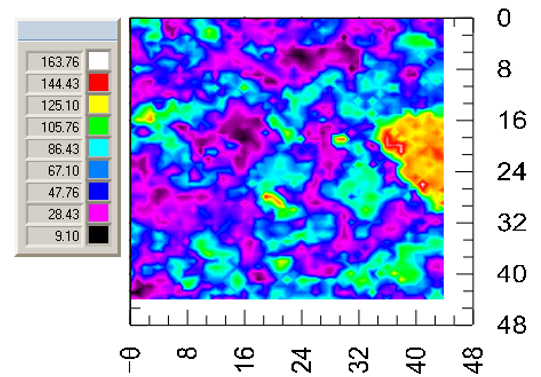Mechanical property mapping is proving a useful tool for studying the links between micro-structure and mechanical properties in highly heterogeneous and multi-phase materials systems such as biomaterials, or cementitious composites.
The dual load head capability of the NanoTest systems allows mechanical property maps (for example hardness and modulus maps) to be generated across varying length scales.
NanoTest systems equipped with the nanopositioning stage have the ability to perform rapid indentation mapping, which enables arrays containing thousands of indentations to be performed in just a few hours. In addition to this, arrays with indentation spacing of just 100 nm can be performed for property mapping of sub-micron scale features.

A key advantage of Micro Materials rapid indentation mapping capability is that the full load-displacement curves are always acquired so that the influence of any surface roughness or porosity on the data can be determined. To achieve a sufficiently smooth surface for nano-mechanical mapping the sample preparation can be challenging and at low load it can be difficult to deconvolute the influence of surface topography from mechanical properties, so, for data assurance it is critical that the load-displacement data be available.
Download our mechanical property mapping application note using the link at the top of the page to find out more.
